Issue
- Resolve a potential phishing attempt warning
- Check your anti-phishing protection status
- Enable or disable anti-phishing protection
- Add web pages to the list of addresses excluded from content scan to not receive the potential phishing attempt warning when visiting them
- Check your anti-phishing activity
- Report a phishing website to ESET
- Report a false positive phishing website to ESET
- Test your anti-phishing functionality
Details
Click to expand
Phishing is a criminal activity that uses techniques of social engineering (manipulating users to obtain confidential information) to gain access to sensitive data such as bank account numbers, PIN codes, etc.
Anti-phishing protects you from attempts to acquire passwords, banking data, and other sensitive information by fake websites masquerading as legitimate ones. When you attempt to access a web page, ESET compares it against the database of known phishing sites.
If a match is found, the connection to the web page is terminated, and a warning message is displayed. However, you have the option to proceed to the web page at your own risk. You can also report the web page to us as a potentially false positive anti-phishing warning.
The anti-phishing database is regularly updated by ESET (users’ computers receive data about new phishing threats every 20 minutes) and includes information from the partners.
Solution
The following products provide anti-phishing protection:
- ESET Security Ultimate
- ESET Smart Security Premium
- ESET Internet Security
- ESET NOD32 Antivirus
- ESET Small Business Security
Anti-phishing is enabled by default, and we strongly recommend leaving it enabled.
Resolve a potential phishing attempt warning
When you attempt to visit a phishing web page, you receive the following warning in your web browser.
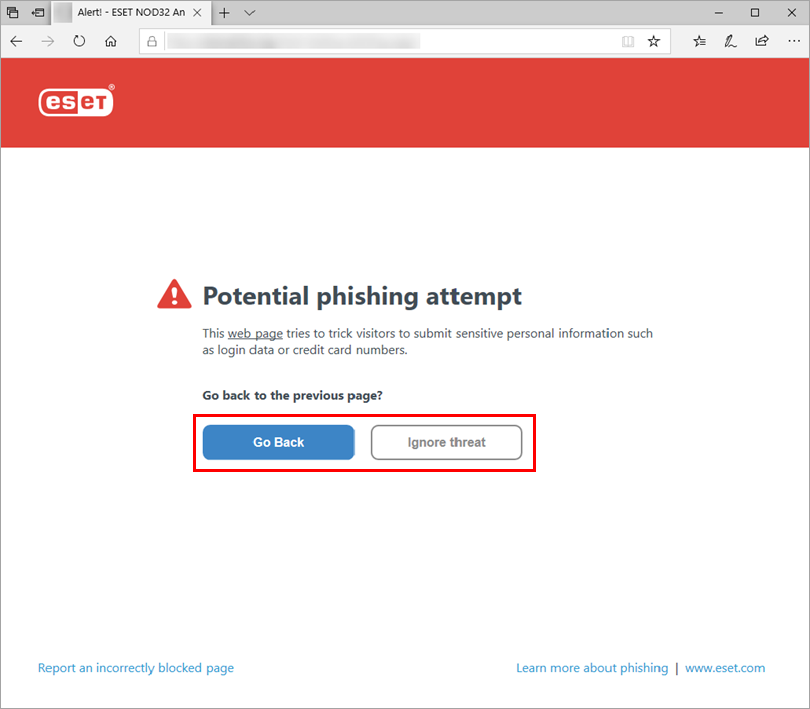
You have the following options to resolve the warning:
- Click Go Back to not proceed to the web page and return to the previous site.
- Click Ignore threat to proceed to the web page. It is not recommended to proceed to a page identified as a potential phishing site.
Check your anti-phishing protection status
Access the Anti-Phishing protection setting in one of the following ways, depending on your ESET product:
ESET Windows home or small office products: Click Setup → Internet protection.
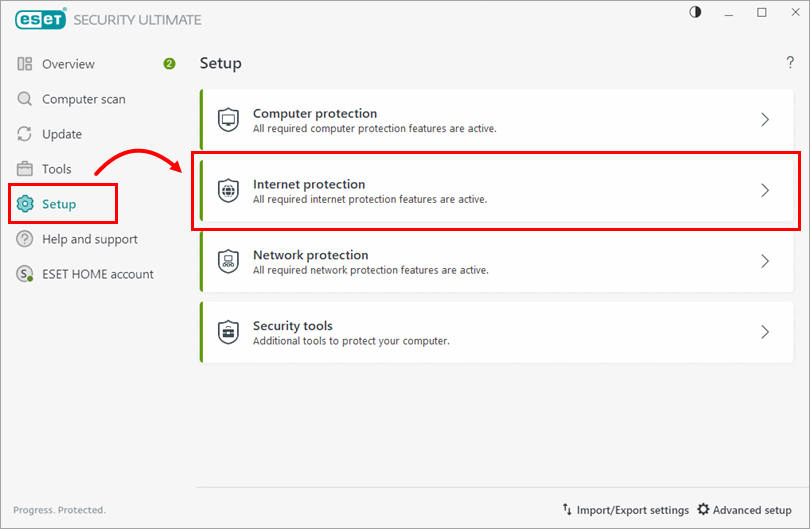
Figure 2-1 ESET Windows business products: Click Setup → Web and email.

Figure 2-2
- Check the Anti-Phishing protection section, where the current status of your anti-phishing protection is indicated.
If anti-phishing protection is Disabled permanently or Paused, you can enable it again.
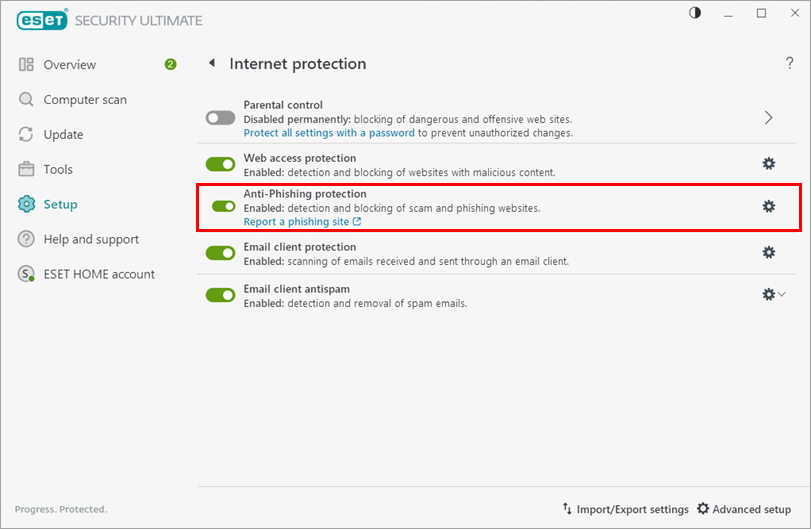
Figure 2-3
Enable or disable anti-phishing protection
Access the Anti-Phishing protection setting in one of the following ways, depending on your ESET product:
ESET Windows home or small office products: Click Setup → Internet protection.

Figure 3-1 ESET Windows business products: Click Setup → Web and email.

Figure 3-2
Click the toggle in the Anti-phishing protection section to enable, disable, or pause the anti-phishing protection. The section indicates your current anti-phishing status.
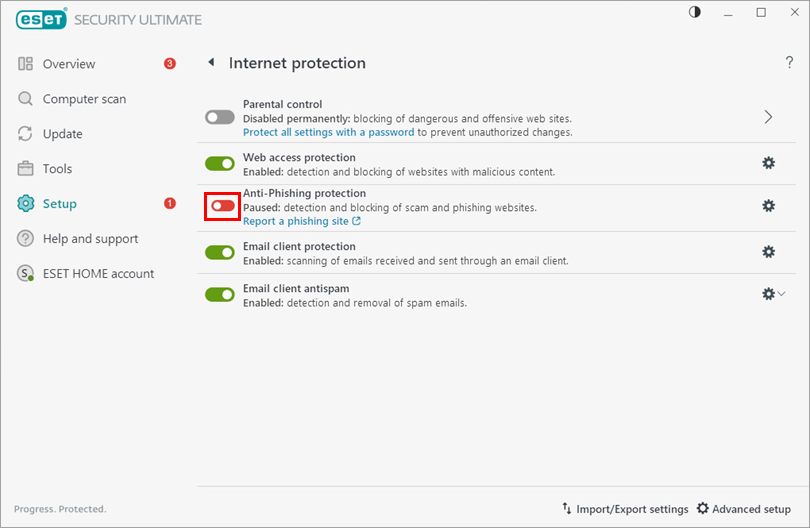
Figure 3-3
Enable anti-phishing protection from the main program window
Open the main program window of your ESET Windows product and click Enable Anti-Phishing protection.
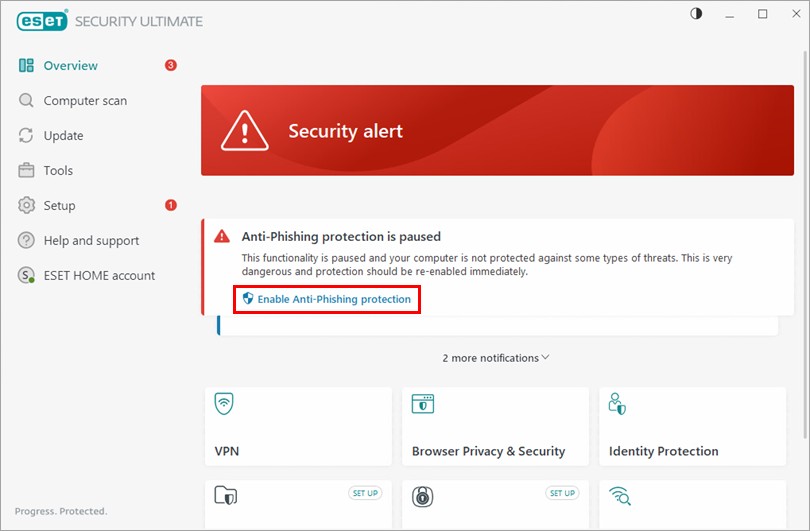
Add web pages to the list of addresses excluded from content scan to not receive the potential phishing attempt warning when visiting them
If you do not want to receive the potential phishing attempt warning when you visit specific websites, you can add them to the list of addresses excluded from content search. When you add a website to the list, you will no longer receive the potential phishing attempt warning when visiting the website.
To add a website to the list of addresses excluded from content search, follow the steps below:
Press the F5 key to open Advanced setup.
Click Web access protection and click Edit next to Address list under URL list management.
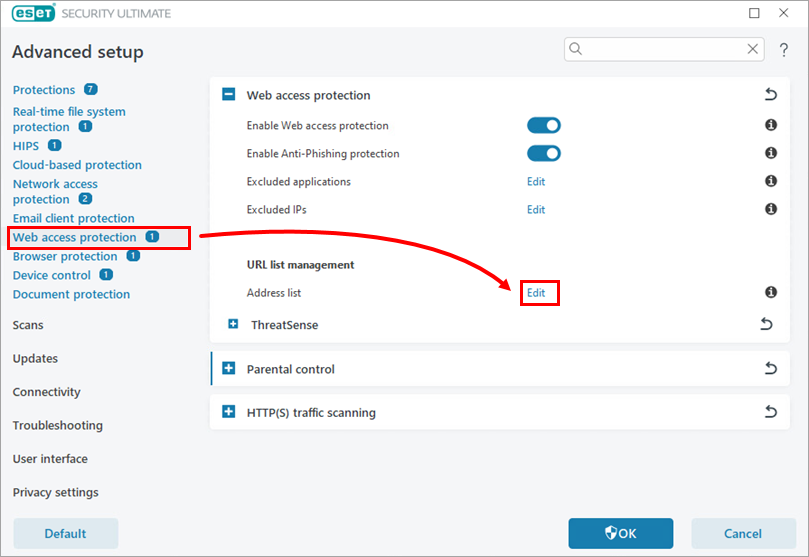
Figure 4-1 Select List of addresses excluded from content scan and click Edit.
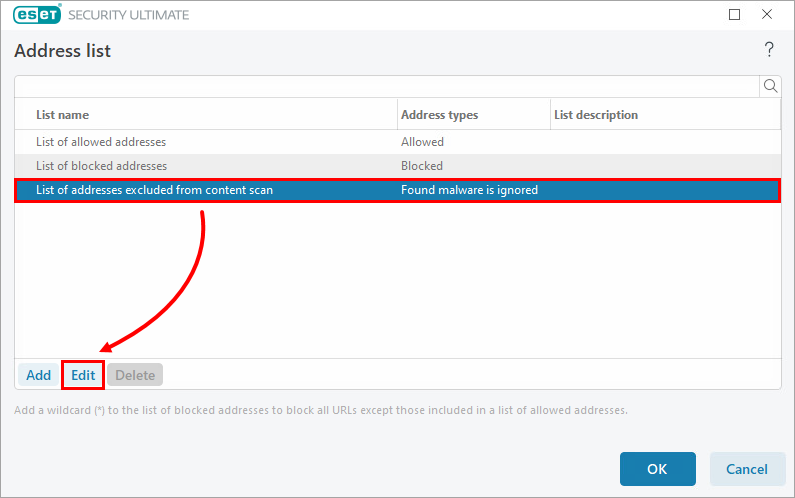
Figure 4-2 Click Add and type or copy/paste the link of the website you do not want to be scanned. To add multiple websites, click Enter multiple values, type or copy/paste the website links and select a separator for multiple values. Click OK → OK.

Figure 4-3 Click OK in the remaining open windows to save your changes and exit Advanced setup. You will no longer receive the potential phishing attempt warning when you visit the websites added to the list.
Check your anti-phishing activity
Click Tools → Log files.
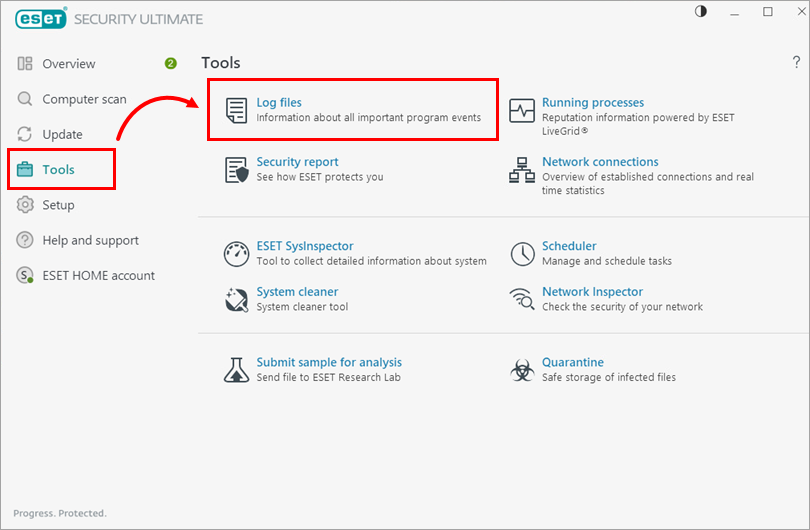
Figure 5-1 In the drop-down menu under Log files, select Filtered websites.
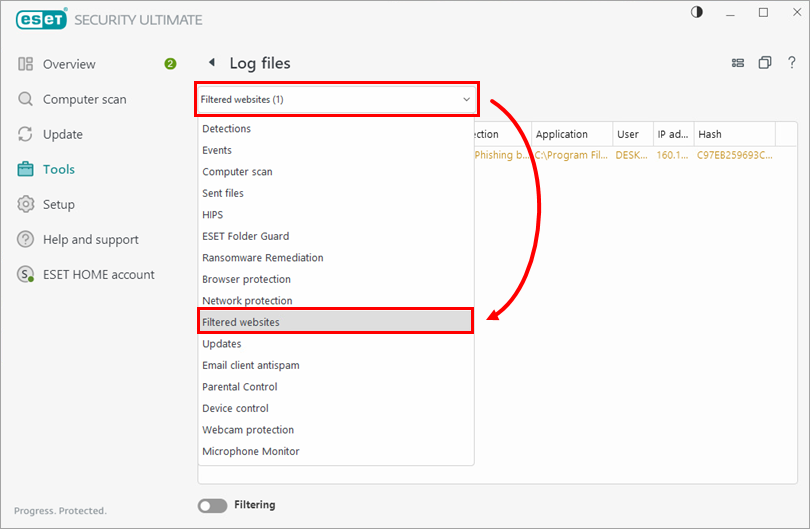
Figure 5-2
Report a phishing website to ESET
If your ESET product does not detect a website you know or suspect is a phishing website, you can report it to ESET via the Report a phishing page website, via an email to ESET Research Lab, or from your ESET Windows product. ESET security professionals will revisit the content. You can also report a false positive phishing website.
Report a phishing site from your ESET Windows product
Access the Anti-Phishing protection setting in one of the following ways, depending on your ESET product:
ESET Windows home or small office products: Click Setup → Internet protection.

Figure 6-1 ESET Windows business products: Click Setup → Web and email.

Figure 6-2
In the Anti-Phishing protection section, click Report a phishing site. You will be redirected to the Report a phishing page website.
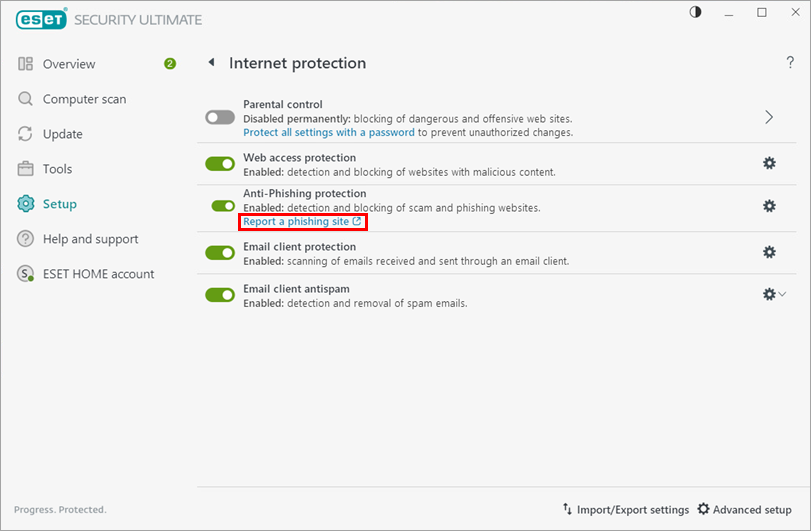
Figure 6-3
Report a false positive phishing website to ESET
If a website you know to be safe is detected as a threat, you can report it via Report a false positive website or via an email to ESET Research Lab. ESET security professionals will revisit the content.